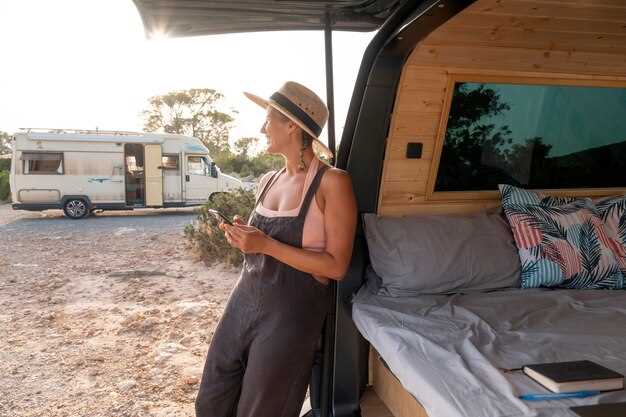
When it comes to outdoor adventures, having the right gear is essential for a successful experience. For overlanding and camping enthusiasts, one crucial piece of equipment that often goes overlooked is the roof rack. A reliable roof rack not only maximizes your vehicle’s storage capacity but also enhances your ability to carry oversized items like kayaks, bikes, and bulky camping gear. Choosing the best roof rack can elevate your adventures, providing both versatility and security.
Overlanding requires a unique set of gear tailored for long journeys across various terrains. Therefore, durability and adaptability become paramount when selecting a roof rack. Roof racks come in various designs and load capacities, making it necessary to select one that aligns with your specific needs. Whether you’re navigating rugged trails or setting up camp in remote locations, the right roof rack can significantly impact your overall experience.
In this article, we will explore the best roof racks available in the market tailored for overlanding and camping. We will discuss their features, benefits, and what to consider when making your choice. From lightweight options suitable for weekend warriors to heavy-duty racks designed for long-haul expeditions, you’ll find the perfect solution for your next outdoor adventure.
Choosing the Right Roof Rack Material for Durability
When selecting a roof rack for overlanding and camping adventures, the material is a crucial factor that significantly influences the durability and overall performance of the rack. The most common materials used in roof rack construction include aluminum, steel, and plastic composites, each offering distinct advantages and limitations.
Aluminum roofs racks are lightweight and resistant to corrosion, making them an excellent choice for those concerned with fuel efficiency and rust. They are often easy to install and can support a decent amount of gear. Additionally, the anodized finish on many aluminum racks adds an extra layer of protection against wear and environmental elements.
Steel roof racks are known for their strength and durability. They can hold heavier loads, making them ideal for serious overlanding gear. However, they are typically heavier than aluminum racks, which may affect the vehicle’s fuel efficiency. Steel racks are more prone to rust if not properly coated or maintained, so choosing a galvanized or powder-coated option can mitigate this issue.
Plastic composites are the lightest option and often come integrated with aerodynamic designs to reduce wind resistance. While they may not support as much weight as their aluminum or steel counterparts, modern composites can provide adequate durability for light to moderate camping needs. They are usually resistant to the elements but may not be suitable for extreme off-road conditions.
In summary, when choosing a roof rack material for durability, consider the load capacity required, the potential for exposure to corrosive elements, and the impact on your vehicle’s performance. Aluminum offers a good balance of weight and corrosion resistance, steel provides unbeatable strength, and composite options are ideal for lighter applications. Evaluate your specific needs, terrain, and gear to make the best choice for your overlanding and camping adventures.
Top Roof Rack Features for Secure Gear Transport

When choosing a roof rack for your overlanding and camping adventures, several critical features ensure the secure transport of your gear. Understanding these features can help you make an informed decision and improve your overall outdoor experience.
Weight Capacity: One of the most vital features is the weight capacity of the roof rack. It’s essential to select a rack that can handle the load you’ll be carrying. Check both the rack’s specifications and your vehicle’s roof load limit to avoid damaging your vehicle or risking gear loss.
Material Quality: The durability of the roof rack depends largely on the materials used in its construction. Aluminum and steel are common materials, with aluminum being lightweight and rust-resistant, while steel offers superior strength. Choose a material that can withstand harsh outdoor conditions while supporting your gear securely.
Mounting System: A reliable mounting system is crucial for stability. Look for racks with easy-to-use installation mechanisms that ensure a tight fit on your vehicle’s roof. Systems that utilize adjustable clamps or bolts provide a more secure hold, reducing the risk of movement during travel.
Crossbars Design: The design of the crossbars impacts not only the aesthetics but also the functionality of the roof rack. Aerodynamic designs help reduce wind noise and drag, improving fuel efficiency. Additionally, crossbars with features like integrated channels or slots enable easy attachment of accessories such as bike racks or cargo baskets.
Security Features: To prevent theft, consider roof racks equipped with lockable mechanisms. Features such as lockable crossbars and integrated locks safeguard your gear during stops and overnight stays, providing peace of mind on the road and at campsites.
Compatibility with Accessories: Overlanding often requires various accessories, such as cargo boxes, ladders, or kayak mounts. Choose a roof rack that is compatible with these accessories, providing versatility for your adventures. Look for racks that come with additional mounting options or slots to attach different gear securely.
Ease of Use: A well-designed roof rack should offer convenience when loading and unloading gear. Features like adjustable height or slide-out extensions can greatly enhance the ease of access. Consider how much time you want to spend securing and retrieving your gear when selecting a roof rack.
Evaluating these features can ensure that your roof rack provides secure transport for your gear, allowing you to focus on enjoying your overlanding and camping adventures without concerns over your equipment’s safety.
Installation Tips for Various Vehicle Types and Roof Styles

When considering a roof rack for overlanding or camping, understanding the installation process for your specific vehicle type and roof style is crucial. Below are tailored tips for different vehicle categories.
1. SUVs and Crossovers: Most SUVs come equipped with factory-installed tracks or rails. Start by checking the manufacturer’s manual for the weight limit and specific installation instructions. Use mounting hardware designed for your vehicle’s make and model to ensure a secure fit. For models with raised rails, consider using clamps that grasp the rails without drilling into the roof.
2. Pickup Trucks: Installing a roof rack on a pickup often requires additional attention since the roof is usually higher. Use a ladder for safe access. For trucks with integrated rails, align the rack’s feet with the existing tracks and secure them according to the manufacturer’s specifications. If your truck has no rails, opt for a model that utilizes a fit kit designed for your truck’s dimensions.
3. Vans: Vans typically have flat roofs, making installation easier. Ensure you have adequate mounting points, which may include brackets or directly attaching to the roof if permitted. Use a proper sealing adhesive to prevent leaks, especially if drilling is necessary. Consider installing crossbars to distribute weight evenly across the roof.
4. Sedans and Hatchbacks: For vehicles with a traditional sedan or hatchback roof style, look for universal roof rack systems. Most of these designs utilize door jambs or magnetic attachments. Check that the rack fits snugly without obstruction to the vehicle’s operation. It’s vital to secure the mountings properly to avoid wind noise and vibrations during travel.
5. Specialty Roof Styles: If your vehicle has a panoramic sunroof, convertible top, or other unique features, consult the roof rack manufacturer for compatibility. Some racks are not suitable for these styles. Ensure the installation does not interfere with any moving parts and test the rack’s stability before hitting the road.
General Tips: Regardless of vehicle type, always double-check the configuration and tightness of all components after installation. It’s advisable to periodically inspect your roof rack during your trips, particularly before long journeys. Adjustments may be necessary due to changes in load or environmental conditions.
Following these installation tips allows for a safe and enjoyable overlanding and camping experience, maximizing your vehicle’s potential for adventure.





